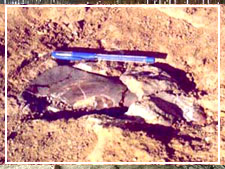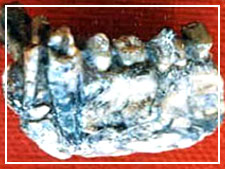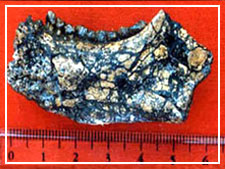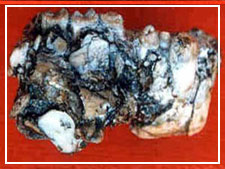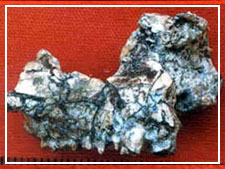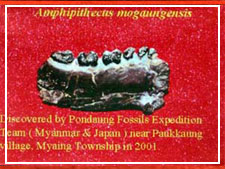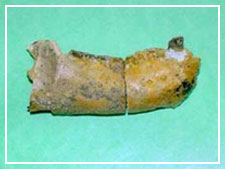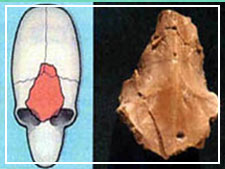Pondaung Primate
Pondaung is a geographical region in Myanmar lying partly in the Sagaing and partly in Magway Divisions. It has become well known world wide due to the discovery of fossilized remains of anthropoid primate some years back by both Myanmar and foreign geologists. Teams of experts on the subject from the United States. France and Japan have made research trips to this area with the cooperation of the Office of the Strategic Studies of the Ministry of Defence and geologists of various Universities of the Ministry of Education and discovered substantial forsilized remains not only of the anthropoid primate but also of some wild fauna and flora.
After laboratory tests and analysis of their finds and scientific discussions at international fora. a consensus has been reached that “Pondaung anthropoid primate fossils are 40 million years older than than their Egyptian counterparts which . were once censidered the oldest”.
The Pondaung Primates Today. Myanmar has found the most reliable proof of ‘Human Origin’. Scientists believe that human originated from primates. or people simply call them monkeys. The word ‘primate’ generally refers to mammals which have both hands and legs and being the most intelligent among all other living beings. Therefore. to trace the human origin. scientists had to look into the earliest evidence of anthropoid primates. The discovery of many fossilized remains of Pondaung primates within the past few years. made this theory firmer. and also confirmed by French. Japanese. and other international scientists.
The Pondaung area is situated in the northwestern part of central Myanmar which consists two ranges named Pondaung and Ponnyadaung of over 3000 feet high. lying in a North-South direction. It has been a famous fossil site for The eastern range is Pondaung and the western range is Ponnyadaung. These two ranges are composed of the rocks of the Pondaung Formation. The formation is almost entirely composed of massive quartz sandstones. brown on the weathered surface. but of a greenish tint in fresh stream sections. As of today. scientists found 4 different groups of primates: Pondaungia. Amphipithecus. Myanmarpithecus. and Bahinia. History Myanmar has a long and complex history. Many peoples have lived in the region and the history began. The first identifiable civilization is that of the Mon. The Mon probably began migrating into the area in about 300 BC. and their first kingdom Suwarnabhumi. was founded around the port of Thaton in about 300 BC.
The Pyu arrived in Myanmar in the 7th century and established city kingdoms at Binnaka. Mongamo. Sri Ksetra. and Halingyi. During this period. Myanmar was part of an overland trade route from China to India. By 849. the Burmans had founded a powerful kingdom centered on the city of Bagan and filled the void left by the Pyu. The kingdom grew in relative isolation until the reign of Anawrahta (1044 – 77) who successfully unified all of Myanmar by defeating the Mon city of Thaton in 1057. After the collapse of Bagan authority. Myanmar was divided once again. The Burmans had restablished themselves at the city of Ava by 1364. where Bagan culture was revived and a great age of Burmese literature ensued. The kingdom lacked easily defendable borders. however. and was overrun by the Shan in 1527. Surviors of the destruction of Ava eventually established a new kingdom centered on Taungoo in 1531 led by Tabinshwehti (reigned 1531-50). who once again unified most of Myanmar. A popular Burmese leader named Alaungpaya drove the Bago forces out of northern Myanmar by 1753. and by 1759 he had once again conquered Bago and southern Myanmar while also regaining control of Manipur. He established his capital at Yangon. The Golden Land Myanmar is known as the Golden Land by many foreign countries. Due to rich cultural heritage from time to time. and also because of the religious believes. the country has many golden pagodas all over the country. Many Myanmar kings and queens had donated gold to pagodas they had donated. As an event. Queen Shin Saw Pu was the first to gild the Shwe Dagon Pagoda. She went on the scales and let them take her weight which was a bout 40 kg.(90 lbs). She donated that weight in gold. The pagodas are usually named with ‘Shwe’ which means gold or golden in Myanmar.
